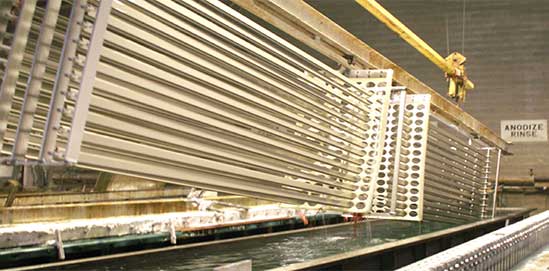Effective and efficient heat exchange is a crucial part of plating and anodizing processes whether you are in the automotive, industrial electronics, or construction industries. Solution baths require precise temperatures to ensure chemicals act as intended to create a product that is durable, aesthetically pleasing, and corrosion resistant. Plate Heat Exchangers are an excellent choice to drive your process in three big ways.

Maximizing Floor Space
Heat transfer panels inside of the chemical bath may require space that could be needed for operation and solutions. Plate Heat Exchangers, which are located outside of the bath, act as a space saver so you will be able to conduct plating and anodizing processes at maximum capacity externally. When compared to equivalent-capacity external types of heat exchangers, Plate Heat Exchangers require one-fifth to one-half less floor space, optimizing your operations in an efficient way.

Servicing Your Chemical Bath Heat Exchanger
Internal or "in bath" heat transfer may require the user to drain the chemical baths when it is time for maintenance. Plate Heat Exchangers allow the heat transfer process to occur outside of the chemical bath, allowing easy access for cleaning or maintenance work on the unit and making preventative maintenance simple to schedule. Simply remove the compression bolts and slide away the moveable end frame to inspect and service 100% of the heat exchanger plates. Read more about this efficient and economical PHE maintenance process.
High Efficiency Plating
Having easy access to your Plate Heat Exchanger along with conserved space helps your bottom line grow. Depending on your process, Plate Heat Exchangers can be an efficient way to conduct your operations by saving the time and resources it takes to service equivalent-capacity heat exchangers. Economic benefits expand even further, due to higher thermal efficiency and lower manufacturing costs than in-tank heat transfer. Plate Heat Exchangers allow for rapid initial heat up in baths where the solution must be brought up to temperature at the beginning of a shift or beginning of the week.
For help integrating Plate Heat Exchangers into your plating and anodizing process, click here.


